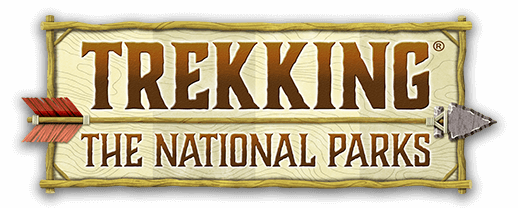Everglades National Park
Located: Florida - Established: May 30, 1934
The Park: The Everglades covers 1.5 million acres of the southern tip of Florida and peeping up just above the water line are the beady eyes of a 15-foot alligator watching your every move! Your guide advises you to keep your hands inside the skiff lest you fall victim to Cap’t Hook’s fate! The Everglades is the only place on earth where ‘gators and croc’s co-exist!
The Everglades was established in 1934 to preserve the subtropical ecosystem and everything that thrives within it – sawgrass prairie, the mangrove forest, an abundance of wildlife. Yet many things have changed since then that has challenged its preservation. The development of southern Florida combined with an ever-changing climate has altered the dynamics of the park.
Look and feel of the 'glades
The diversion of fresh water resources to real estate development and agribusiness adjacent to the park has contributed to the shrinking of fresh water flowing through the park. In addition, a warming of the climate has created a rising ocean. A rising ocean adds additional salinity to the ecosystem, which affects the groundwater and soils. It is unknown how the salinization of these resources will affect the local flora and fauna.
Shrinking glaciers at Glacier National Park and a rising ocean in the Everglades are a couple of examples of how man has altered the environmental landscape. What can we do about it? Reduce your carbon footprint. Recycle. Car pool. Raise air conditioning thermostat one degree and lower heating thermostat one degree. Turn off lights, fans and other electrical devices when not in use. Convert to CFL or LED light bulbs. Take public transportation whenever convenient.
Getting there: The Ernest Coe Visitor Center at the eastern section of the park is about 50 southwest miles of Miami. The Gulf Coast Visitor Center in the northwestern section of the park is 25 miles south of Naples, FL.
When to visit: The Everglades has two seasons – Wet and Dry. The wet season runs from May through November and is typically hot and humid. With the warm, wet weather comes a plethora of pesky insects. Mosquitoes and biting flies can make your visit uncomfortable…however, during this season, the crowds will be at their lowest!
The winter dry season (December thru April) is the best time to visit the park and observe the diverse collection of wildlife this park was established to protect. Bothersome insects like mosquitoes and biting flies prefer the moist wet season so their presence is limited during this season.
Wooden walkway along the Pahayokee Overlook Trail
What to do: When you get there, be prepared for gators, manatees, and flocks of wading birds. For a real adventure, join a Ranger for a Slough Slog. This off-trail trek will have you knee deep sloshing through the Everglades as you explore the River of Grass and the hidden world of the Cypress Dome.
If slogging through the ‘glades doesn’t appeal to you, take a kayak or canoe and paddle your way through shallow grassy marshes or out and about Florida Bay. Paddle trips range from a couple of hours to several days…depending upon your spirit of adventure!
Hiking: The park has several easy trails for hiking. Unfortunately, the Long Pine Key Trail was closed due to a recent fire in the area. However, we did hike the Eco Pond Trail, the Anhinga and Gumbo Limbo Trails and the Pahayokee Overlook Trail.
Where to stay: There are no lodging facilities within the park with the exception of the two campgrounds and several backcountry sites accessed by canoe, kayak or motorboat. The two drive-in campgrounds are accessible from the Homestead entrance of the park: Long Pine Key Campground and Flamingo Campground. Both accommodate tents and RV's with a limited number of group sites.
For a more “wilderness” experience, Everglades offers a number of ground sites, beach sites, and elevated camping platforms (chickees) in various locations in the park. Most of these sites are accessible by canoe, kayak, or motorboat, although a few may be reached by hikers. A backcountry permit is required for all wilderness campsites and issued the day before or day of your trip.
Memorable moments: Experiencing first hand the incredible wildlife - baby manatee, alligators, crocodiles, colorful birds, turtles...oh my!
This baby manatee followed Terry around the dock at Flamingo.
Trivia: Many believe the Everglades to be a swamp or marsh. In reality it is a slow flowing river!
Banner: Kayaking the Buttonwood Canal near the Flamingo Visitor Center.
Experience these Check List:
- Stop by any of the park's four Visitor Centers
- Take a boat, kayak or canoe tour
- Hike a trail or three
- Go Birding
- Take the Shark Valley Tram Tour and gaze over the 'glades atop the 65-foot observation tower
- Participate in a Ranger Program
Crocodile
Alligators
The wildlife at Everglades was incredible!
Pelican coming in for landing
Eco Pond regulars.
Terry rescuing turtle from road during park visit #55.










